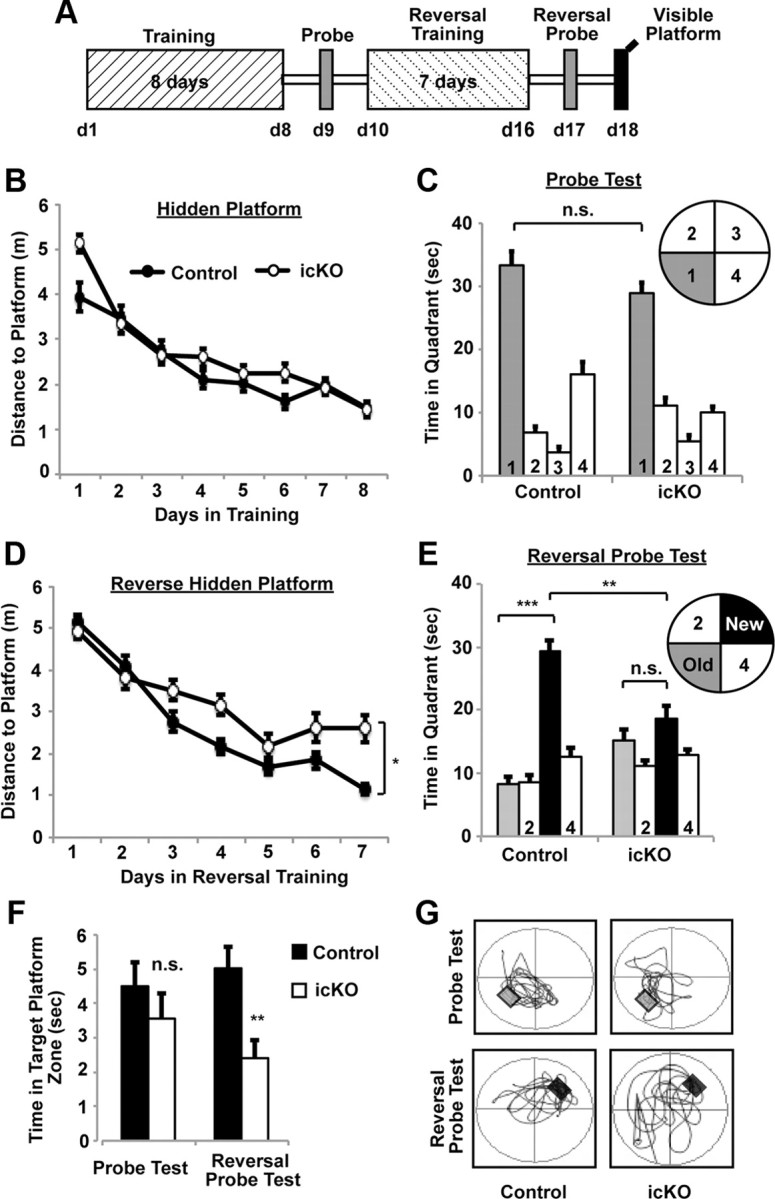Figure 8.

ERK5 icKO mice show impaired learning of newer spatial information. A, Schematic depiction of the experimental design. Mice were subjected to 8 d of training [4 sessions per day, 30 min intersession interval, from day 1 (d1) to d8] in the hidden platform water maze. A probe test was conducted 24 h later. Mice were then subjected to 7 d of reversal training (4 sessions per day, 30 min intersession interval) where the escape hidden platform was relocated to the opposite quadrant of the water maze. This was followed by the reversal probe test and visible platform test. B, Target (in quadrant 1) acquisition in the hidden platform, quantified as swim distance to platform, was similar in control and ERK5 icKO mice, demonstrating similar spatial learning. C, ERK5 icKO mice spent a similar amount of time in the virtual target quadrant as control mice in the probe test, suggesting that ERK5 icKO mice retained the spatial memory. D, Swim distance to escape in the reversal hidden platform training where the hidden platform was moved to quadrant 3. ERK5 icKO mice swam longer distances, suggesting impaired learning of newer spatial information. E, Control but not ERK5 icKO mice spent significantly more time in the new virtual target quadrant 3 than in the previous virtual target quadrant 1 during the reversal probe test. F, ERK5 icKO mice spent less time in the target platform zone than control mice during the reversal probe test. G, Representative computer-generated tracing of the swim-and-search pattern of control versus ERK5 icKO mice in the initial probe test and the reversal probe test. Data are mean ± SEM from two independent experiments with n ≥ 10 per treatment group per experiment. n.s., Not significant. *p < 0.05; **p < 0.01; ***p < 0.001.
